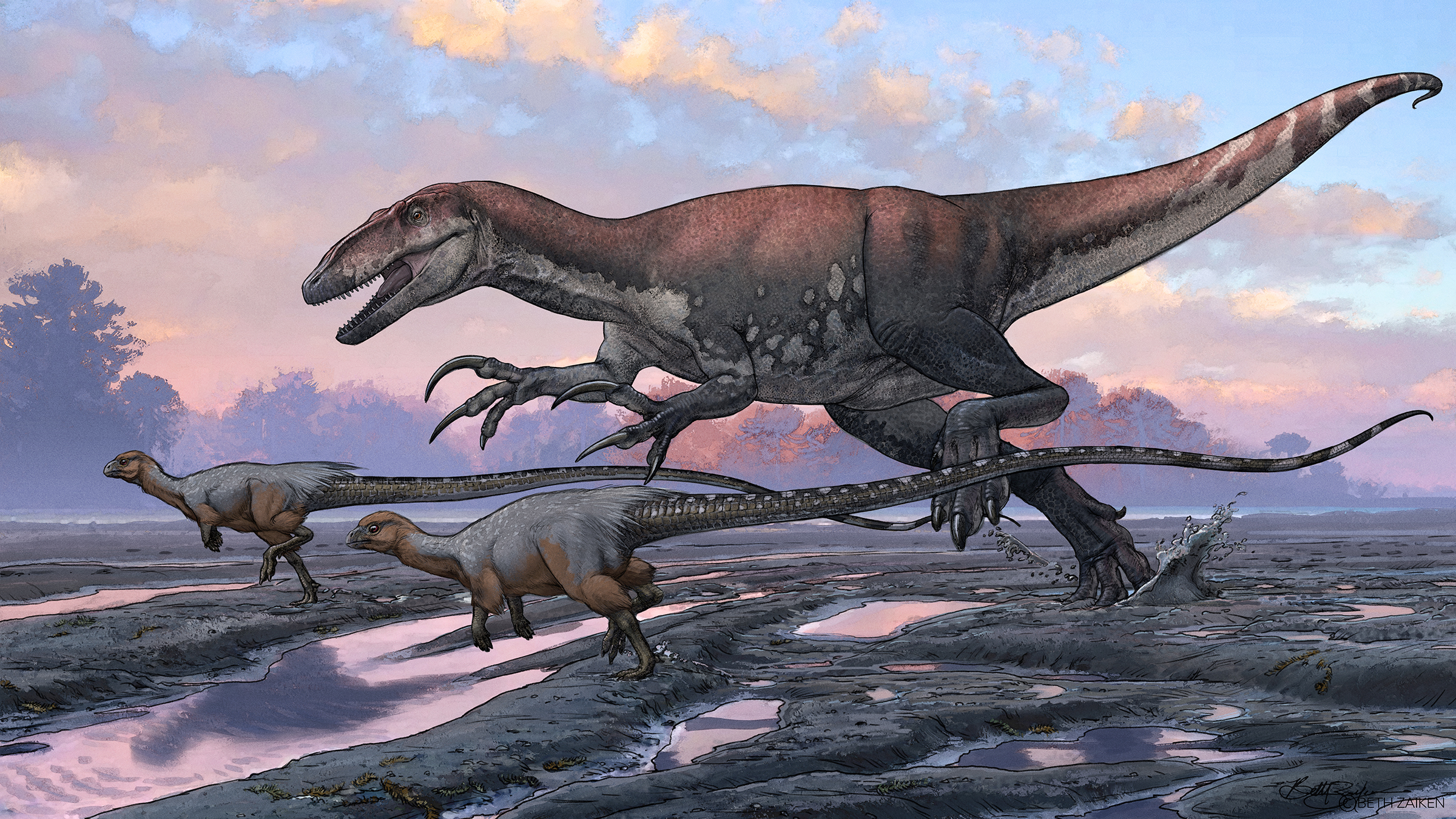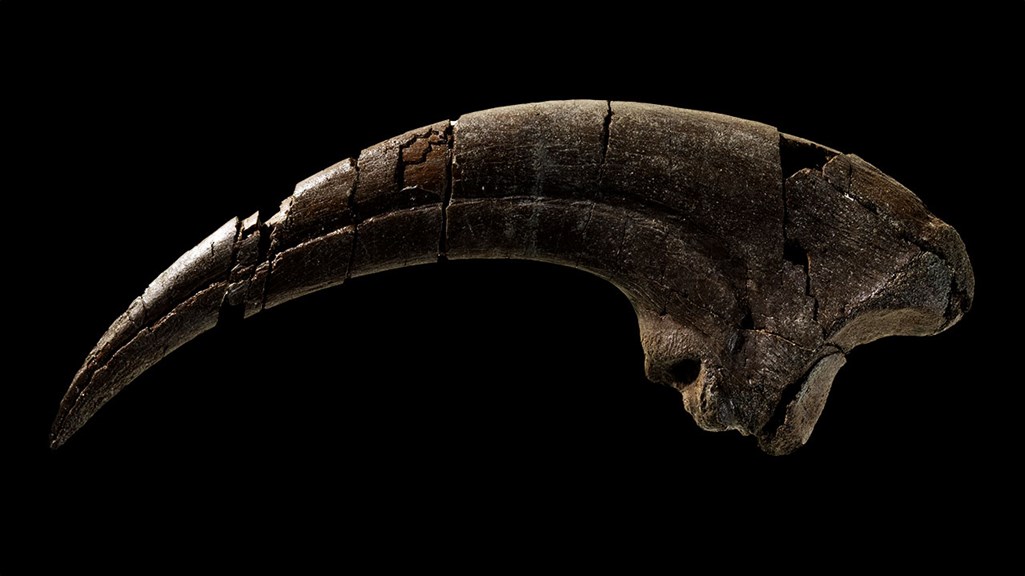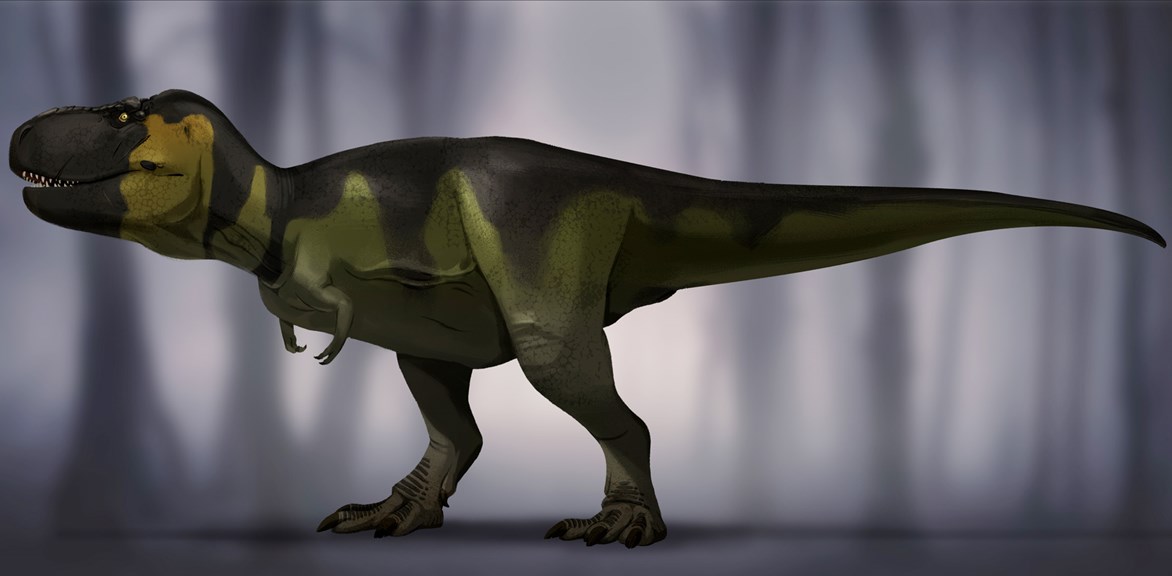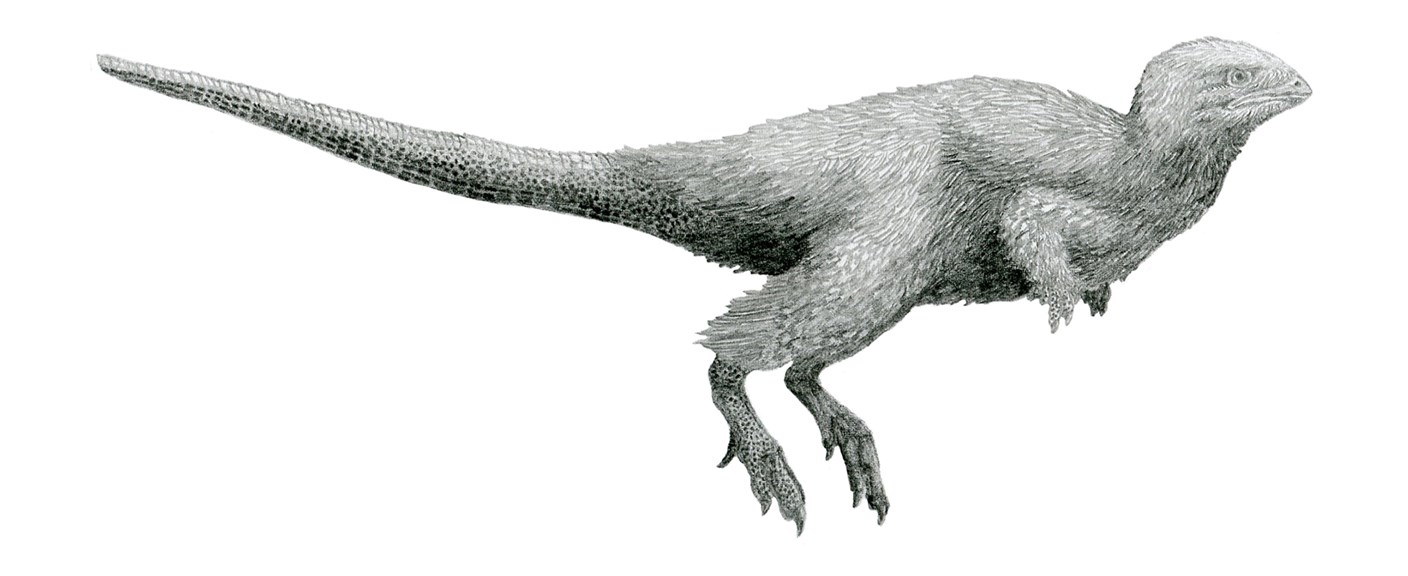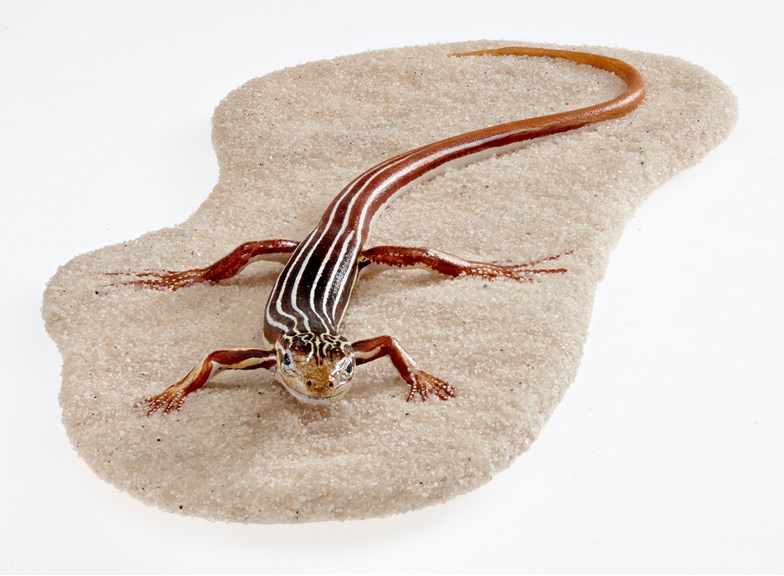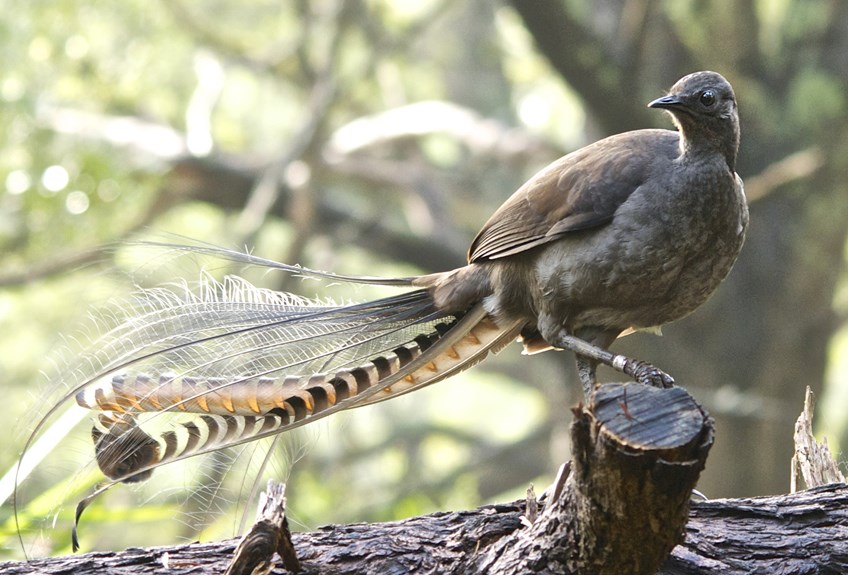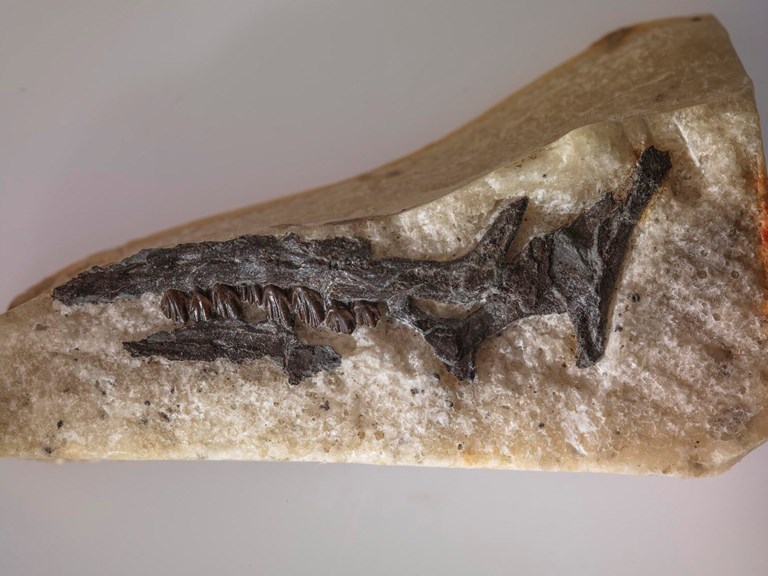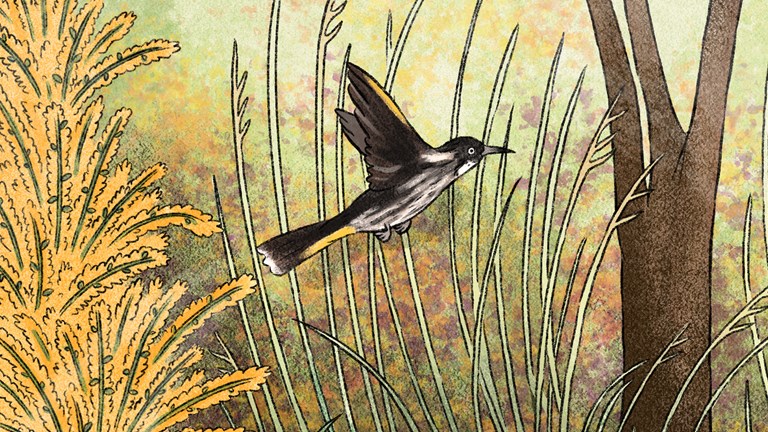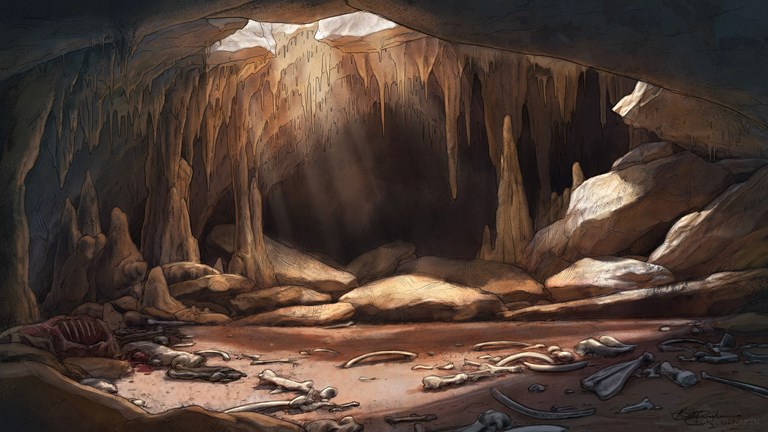Otway Claw
The discovery of this fossilised claw in sandstone off Victoria’s coast was the beginning of a mystery for palaeontologists. Who did it belong to? After dating the claw to the Early Cretaceous they were able to confirm it belonged to a theropod, most likely Australovenator. This single discovery changed our understanding of when and where Australovenator lived.
Predator
Australovenator was a fast and agile hunter, and an apex predator just like the famed Tyrannosaurs rex. But unlike T. rex, Australovenator has smaller teeth relative to its size, larger arms and claws. It was a chase predator well adapted to pursuing and capturing agile prey.
Feathers
Our artist has shown Leaellynasaura with feathers that resemble its much older relative, the Russian dinosaur, Kulindadromeus zabaikalicus. When fossilised bones of Kulindadromeus were found surrounded by a halo of delicate feathers, it led scientists to believe that feathers may have been common to all dinosaurs, not just theropods.
Tail
Leaellynasaura has the longest tail relative to body size of any dinosaur yet discovered. We’re not sure why it has such a long tail, but we know that some living lizards’ long tails can distract predators by drawing attention from more vulnerable parts of the body.
Colour
How do we know what colour these dinosaurs were? Palaeoartists consider how and where an animal lived then study similar, modern animals to draw conclusions about how extinct creatures might have looked. We don’t know exactly what colour Leaellynasaura was in life, but our artist has taken inspiration from the Superb Lyrebird. You can see this reflected in traits like the showy tail, ground dwelling lifestyle and temperate forest habitat.
Environment
The rocks that have preserved this period of Victoria’s past were laid down in billabongs, floodplains and river bottoms. The illustration reflects what we know about this time, when an ancient rift valley connected Australia to Antarctica.
